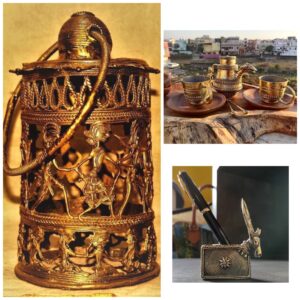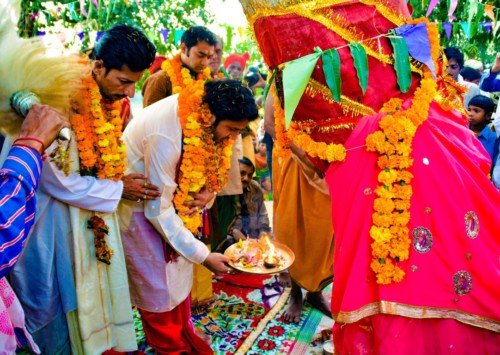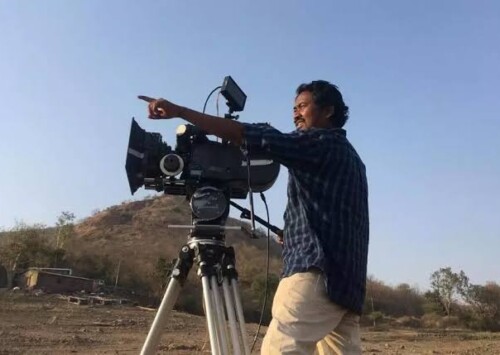From Mohenjo-Daro to today’s Bastar: Dhokra Art

Over 500 tribal families still practice Dhokra art in Bastar region of Chhattisgarh (Photo: Ocher Studio)
It is an art that connects the collectors as well as the creators with the Indus Valley Civilisation that flourished in large part of northwestern India and modern-day Pakistan. The most famous creation of this art, called Dhokra, also belongs to the Mohenjo-Daro, the hub of Indus Valley Civilisation, and is referred to as the Dancing Girl, a lost-wax casting sculpture made of bronze that dates back to over 4600 years ago.
Dhokra initially referred to a group of nomadic craftsmen. The Dhokra art is kept alive and in use by the tribal people still now in many states because of the unique beauty of this art, in which metal crafts are made through wax casting techniques, it’s completely an eco-friendly process. One of the earliest known lost wax artefacts is the dancing girl of Mohenjo-Daro.
Over 4000 years later, it seems that the core of this art has moved nearly 2000 km towards southeast as the hub of Dhokra art now lies in Bastar region of Chhattisgarh, where over 500 tribal families still practice this art that has been handed down to them over the past several generations and this rich tradition has won them thousands of admirers, both in India and across the world.
“All members of my family are involved in Dhokra art. In future, I will teach it to my children too and the tradition will continue to live in my family in the future also. I learnt this art in a very young age from my father, as we have been practicing this art from over 150 years and from so many generations. I don’t want to leave our traditional and to do some else,” Mahesh Sagar, a Dhokra artist from Bastar tells Media India Group.
Natural raw materials are used in the process of making Dhokra pieces. Each creation is made through an arduous process and this ancient tribal art has many stages which takes days to perform and requires three different types of soil.
At first the basic mould is made with alluvial soil. The mud is then mixed with goat and cow dung or rice chaff thoroughly, then the basic shape of the sculpture is made using hands. The mould is left to dry, until it hardens. Once it is duly hardened and dried, it is layered with pure beeswax. Wax threads are rounded around the clay mould until its entire surface is covered. Now the decorative step is done and the desired artefacts are created. After creating the design, another layer of soil paste and termite soil is applied on the mould and kept for drying.
Next the final stage is undertaken with the help of a furnace that is prepared with bricks, natural fuel, charcoal, cow dung or coal. The wax is cooked over a furnace and it leaves a free channel for the metal to flow. Simultaneously, the metal is melted in the furnace and the molten metals, mainly brass and bronze, are carefully poured inside the mould which is then cooled over several hours.
“The major problem in this art is that when the hot metal is poured inside the structure, many times the melted metal doesn’t enter every channel of the artefacts, in many situations we face lots of losses,” explains Sagar.
“We spend around INR 500 for 1 kg of metal, due to the issues with metal flowing through each channel, at times we have to repeat the process and we end up facing losses. Every step has to be performed carefully and precisely but even many times the time and the energy we spend to make these moulds are not even paid off,” adds Sagar.
Then the final metal art is broken from the mould and the caste figures are removed and cleaned thoroughly. As the art is influenced by tribal themes, it is all related to mythical creatures, animals, human creatures and nature. Dhokra artists need to pay a lot of attention to their creations in order to retain its authenticity.
Ups and downs of Dhokra art market
In recent years, the Dhokra arts have seen a lot of demand in domestic market as well as overseas because of its primitive simplicity, enchanting folk motifs and attractive forms. Despite the pickup in the demand, many artists still struggle to sell their creations. This challenge has been partially addressed as some of the artists have started to use e-commerce to sell their products.
“We sell our products in Jagdalpur, around 15 km from Bastar. All the artists of our community sell their products in that market and we also send to exporters who then sell our products overseas. We get a good income out of this,” says Sagar.
“Not only Bastar, but there are seven more small villages where a lot of families still make Dhokra art,” Sagar adds.
With the boom in e-commerce, the tribals are being helped by others in putting their creations for sale on various e-commerce platforms and where receive a lot of buyers from the overseas and which significantly boost their income. “I learnt this art during my college and the most unique and specialty of this art I felt is, if we buy the art for once it will remain the same even after many generations. I help the tribal artists to sell their products through e-commerce. During the festival season, the statues of gods are in great demand, though most of the time, a majority of our buyers are from foreign countries,” Nisha Taram, from Raipur, who helps the artists put their creations on e-commerce platforms, tells Media India Group.
However, as the incomes can wary sharply due to uncertainties around the market, a number of artists have been forced to stop practicing their traditional art and instead have taken up other jobs to eke out a living.
“Earlier we were also part of a traditional artist family, but few years back my grandfather chose to leave this art due to many reasons. Many other artists have also left this art due to poor and uncertain incomes. Now, as I have a special connection with this art, I help artists from Bastar to sell their products online,” Shriya, a resident of Bastar, tells Media India Group.
“To make a small piece, it takes around 15 days or even a month, it depends on the design and size. For example, if an artist makes a small structure in three inches it also takes around 15 days to complete. But in many cases the artists don’t even manage to sell their art at a price where they can recover their costs, let alone get a small profit so that they can earn a living,’’ says Taram.














